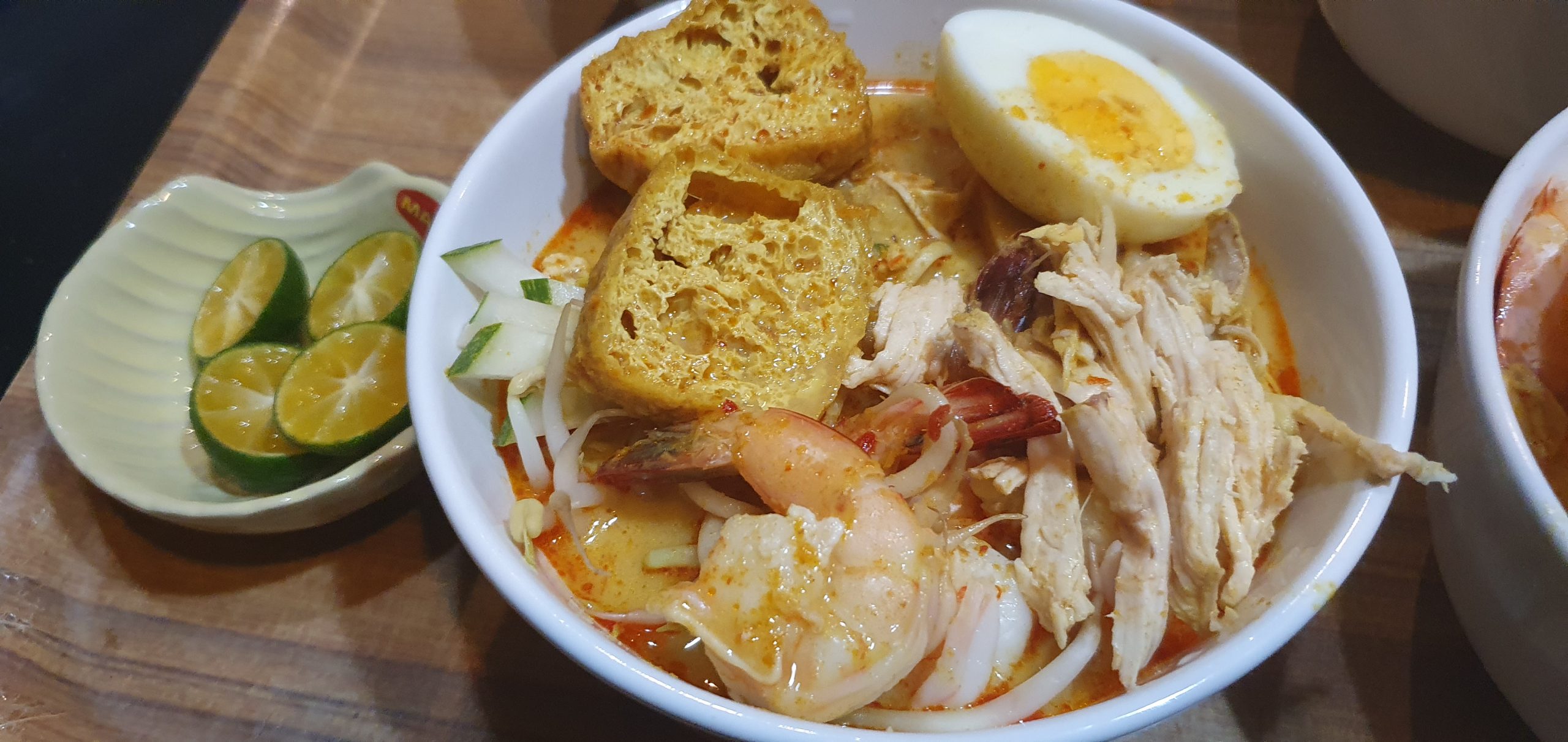I love mi kari. I love them a specific way, where the broth is creamy but not too rich or thick, with a good mix of toppings but not overboard or trying too hard. I also like the broth to be flavorful and bursting with umami, which I imagined should come from some form of stock.
Not every restaurant can get it right. Madam Kwan’s makes them too thick. Restoran Berjaya generally isn’t bad, but sometimes the curry is underseasoned, or there’s just not enough toppings. I like the noodles they serve in Restoran Kin Hua in JB, but it’s in, well, JB. Now that Covid cases are exploding in KL and Selangor, all the more I didn’t feel like going out hunting for curry noodles. So it looked like I had no choice but to make ’em myself.
I got the recipe from Malaysian Chinese Kitchen, which I think formed a good base to start. I also borrowed ideas here and there for the condiments and the broth, and I think for a first try it turned out quite nice. There’s still plenty of room for improvement, will definitely keep making this to get it right.
Update: Tested my modifications to the recipe, and this turned out marvellous. I made a basic chicken stock from scratch, and used the fat skimmed off from the stock in place of the cooking oil when sauteeing the blended spices just for a bit of extra decadence. Am very happy to now have a go-to mi kari recipe for when the noodle craving hits.
Curry Noodles
Ingredients
- 1/2 cup water
- 5 shallots, peeled and roughly chopped
- 3 cloves garlic, peeled and roughly chopped
- 3 dried chillies, seeds removed and soaked in hot water
- 1 stalk lemongrass, 2/3 of the tops removed, root part sliced
- 1 1/2 inch piece ginger, peeled and roughly chopped
- 1/2 cup meat curry powder
- 1/4 cup cooking oil OR chicken fat
- 2 bone-in, skinless chicken breasts
- 6 cups chicken stock
- 3 screwpine leaves (daun pandan), shredded lengthwise and tied into a knot
- 3 tablespoons fish sauce
- 1 small piece palm sugar OR 2 tablespoons dark brown sugar
- 300 grams bean sprouts, trimmed
- 400 grams yellow noodles OR rice vermicelli (beehoon)
- 500 grams (about 15) large shrimp, peeled and deveined
- 400 ml coconut milk OR full cream milk OR mix of both
- 150 grams fried tofu, halved
- 80 grams fishcakes, sliced
- 2 hard boiled eggs, halved
- 2 pieces calamansi (limau kasturi), halved, for serving
- 1 small bunch cilantro leaves (daun ketumbar), chopped
Directions
In your blender jar, add the water, shallots, garlic, dried chillies, lemongrass, ginger, and curry powder.

Blitz into a smooth paste.

In a large pot over medium high heat, heat the oil. Add the curry paste and cook, stirring, until fragrant, about 5 minutes.

Add the chicken and cook, until the meat starts to turn opaque, 3 minutes.

Add the chicken stock, pandan leaves, sugar and fish sauce, and stir to combine.

Cover and bring to a boil. Reduce heat and simmer, 30 minutes.

Bring another pot of water to a boil.
Add the beansprouts and cook, 20 seconds. Remove from the water using a strainer and set aside.

Add the noodles and cook, 1 to 2 minutes. Remove from the water using a strainer and set aside.
Add the fishcakes and cook, 1 to 2 minutes. Remove from the water using a strainer and set aside.

Lower the shrimp into the pot (you can also cook the shrimp in the curry instead, after removing the chicken from the pot) using a metal strainer and cook, until just turning pink and opaque, 3 to 4 minutes. Remove from the water and set aside.

Remove the chicken from the curry soup. Using tongs, shred the meat and discard the bones.
Add the milk, coconut milk, tofu, and salt and pepper to taste. Return the mixture to a boil, and remove from heat.

Serve the noodles. In large, deep bowls, add the noodles and top with the shredded chicken, shrimp, a few slices of fishcakes, bean sprouts and half an egg.
Ladle the curry soup into the bowls with a few pieces of tofu.
Garnish with the cilantro leaves. Serve immediately with the calamansi.


Leave a Reply